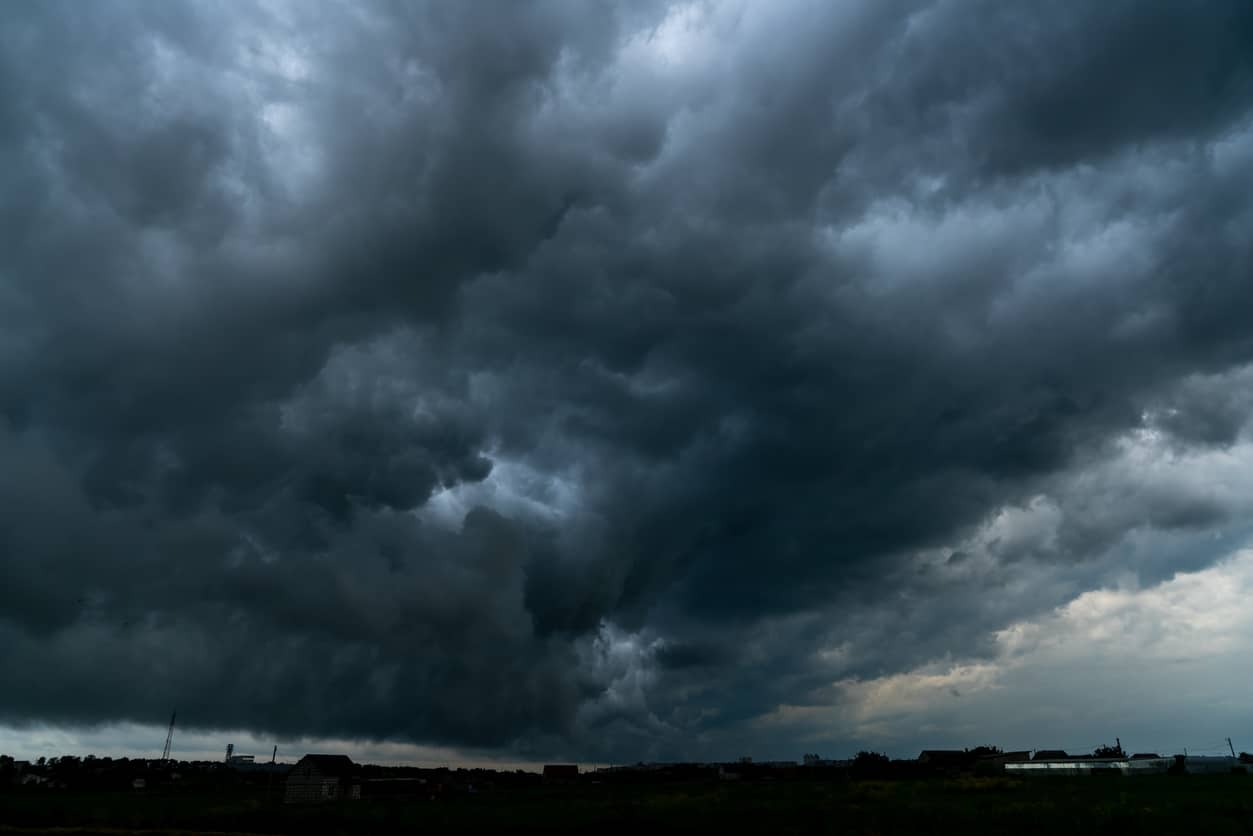The first half of 2023 is a continuation of the recent run of years with high losses. While the overall losses of US$ 110bn were lower than those in the first half of 2022 (US$ 120bn), they were still well above the average for the last ten years (US$ 98bn, inflation-adjusted). The same is true for the insured losses of US$ 43bn (previous year: US$ 47bn; ten-year average for half-year losses: US$ 34bn).
Less than 40% of overall losses in the first half of the year were insured – evidence of the large insurance gap that persists in many countries for multiple natural hazards. Insurers bore around 35% of worldwide losses in terms of the average half-year losses in the period 2013–2022.
What were the costliest natural disasters in the first half of the year?
The earthquake in Turkey and Syria was by far the most devastating natural disaster in the six months of the year. On 6 February, a series of tremors struck southeastern Turkey close to the border with Syria. The two strongest tremors had magnitudes of 7.8 and 7.5 respectively and were the strongest earthquakes in Turkey in decades. A very large number of buildings, roads and bridges were destroyed. Around 58,000 people lost their lives. As a result, the global number of victims of natural disasters in the first half of the year (some 62,000) was higher than it had been since 2010. Overall losses from the earthquake in both countries are estimated at around US$ 40bn, with Syria accounting for roughly US$ 5bn.
Despite the establishment of the Turkish Catastrophe Insurance Pool (TCIP), which provides compulsory insurance for residential buildings in Turkey and now has insurance penetration of more than 50%, the insured portion of overall losses totalling around US$ 5bn remained small. The sum insured under the TCIP is limited to TL 640,000 per residential unit (equivalent to approximately US$ 34,000 at the time of the earthquake). Commercial enterprises are not included in the pool. Similarly, infrastructure is generally not insured. Particularly in a country as exposed to earthquakes as Turkey, it would be both desirable and practicable to have a wider spread of insurance cover, to ensure that those affected – governments included – can recover more rapidly from the financial losses.
Extremely high losses from severe thunderstorms in the USA
In the USA in the first half of the year, multiple rounds of severe thunderstorms, accompanied by destructive tornadoes and hail, caused losses to spike. Overall losses from these storms came to more than US$ 35bn, of which more than US$ 25bn was insured. Losses of this magnitude from severe thunderstorms in the USA now seem to be normal occurrences, rather than outliers. After adjustment for inflation, higher first-half thunderstorm losses have only occurred once before in the USA USA (in 2011, with US$ 46bn in overall losses and US$ 29bn in insured losses).
The costliest single event of the year so far was a series of thunderstorms in mid-June, which affected large parts of Texas. Severe squalls and hailstones measuring up to twelve centimetres in diameter – almost twice the size of a tennis ball – caused the most serious damage. More than 50 tornadoes were recorded, some of which were rated F3 on the Enhanced Fujita Scale, with wind speeds in excess of 218 km/h. The overall loss for this outbreak is estimated at around US$ 8.4bn, of which approximately US$ 7bn was insured.
Most researchers assume that climate change is facilitating the formation of severe thunderstorms with tornadoes and hail, since the continuing warming is resulting in greater evaporation and, particularly at ground level, in increased humidity. This increases the potential for thunderstorms to form. Loss statistics for thunderstorms in North America and Europe are also trending upwards, even after adjustment for the increase in values from economic development.
Climate change and El Niño – 2023 could be the warmest year ever
“The effects of climate change are having a stronger and stronger impact on our lives. The first half of 2023 was characterised by record temperatures in many regions of the world, very high water temperatures in various ocean basins, droughts in parts of Europe, and severe wildfires in northeastern Canada,” said Ernst Rauch, Chief Climate and Geo Scientist at Munich Re. The global average temperature for June was the warmest ever recorded, up by more than 1.2°C compared to pre-industrial times.
“As in 2016, the natural climate phenomenon El Niño is playing a role in 2023. It is characterised by a temperature swing in the Pacific that influences extreme weather in many regions of the world and causes temperatures to temporarily rise further. All the same, research on global temperature trends is unequivocal: rising water and air temperatures worldwide are mainly driven by climate change, in turn causing more weather-related natural disasters and financial losses,” Rauch added.
Hurricane activity in the North Atlantic generally decreases during an El Niño phase. However, the exceptionally high water temperature in the main areas of hurricane formation, with values that are 1–2°C above the average, make it more likely that a greater number of storms will form in the season’s main phase starting in August. This makes it difficult to predict what the current hurricane season will be like.













